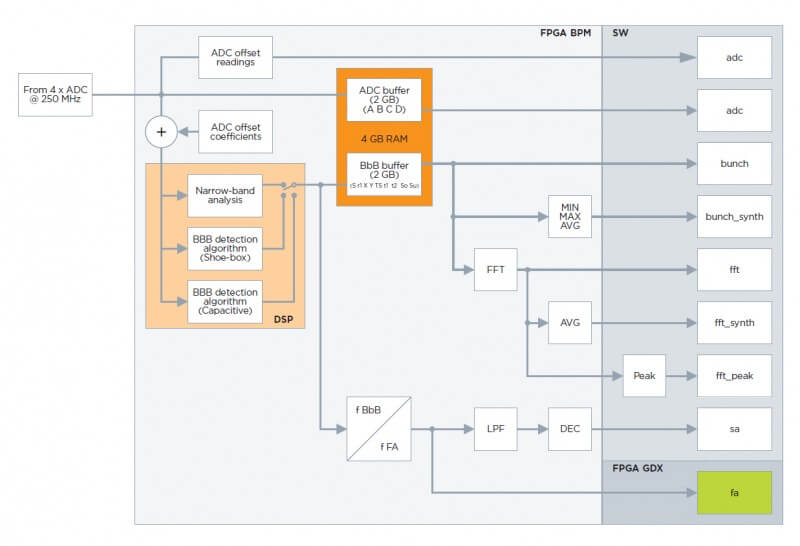Can’t find your discipline or profession? Write to us and we’ll
do our best to work something out.
Every project is unique.
We adjust our services to your needs.
Libera Hadron is a BPM signal processing system developed especially for the needs of the hadron synchrotrons. It can be used for position measurement, tune measurement, and detailed beam studies.
Benefits:
Data processing:
The complete processing of data and its storage in buffers are initiated by the external trigger event signal. The data is stored in two 2 GB buffers which can be read out on the user’s request. Through real time signal processing algorithms, the system automatically detects individual bunches, measures the transversal positions at high resolution, the charge and the arrival time. The measurements can be organized in bunch maps in order to provide a global representation of the beam dynamics over long periods of time. Both Slow data and Fast data are available for the implementation of low latency feedback systems.
DSP AND DATA PATHS
Three standalone algorithms are implemented to support different types of pickup signal:
Libera Hadron provides six basic data paths (raw ADC data, Bunch-by-bunch, FFT, FFT peak, Fast data and Slow data). GbE (optional) Fast data is available over SFP on the GDX using the GbE protocol. Fast data and Slow data are stream type and can be delivered to the user simultaneously: Fast data at 10 kHz and Slow data at 10 Hz. All the other data paths are data on demand type.

Interfaces:
The hardware is based on MTCA standards, with a proprietary chassis, which accommodates up to four full-width and two half-width modules. It includes a high performance back-plane which satisfies even the most demanding applications. In addition there is a platform management controller and a COMe module which both support different CPU options.
| Parameter | Typical value (RMS) |
|---|---|
| Bunch-by-bunch data | < 1 um |
| Fast data | < 100 nm |
| Parameter | Value |
|---|---|
| Number of input channels | 16 (4 per module) |
| ADC resolution | 16 bits |
| Max ADC sampling clock frequency | 250 MHz |
| Memory size per module | 4 Gbytes |
The GDX module extends the interconnection capabilities of the BPM electronics.
Can’t find your discipline or profession? Write to us and we’ll
do our best to work something out.
We adjust our services to your needs.